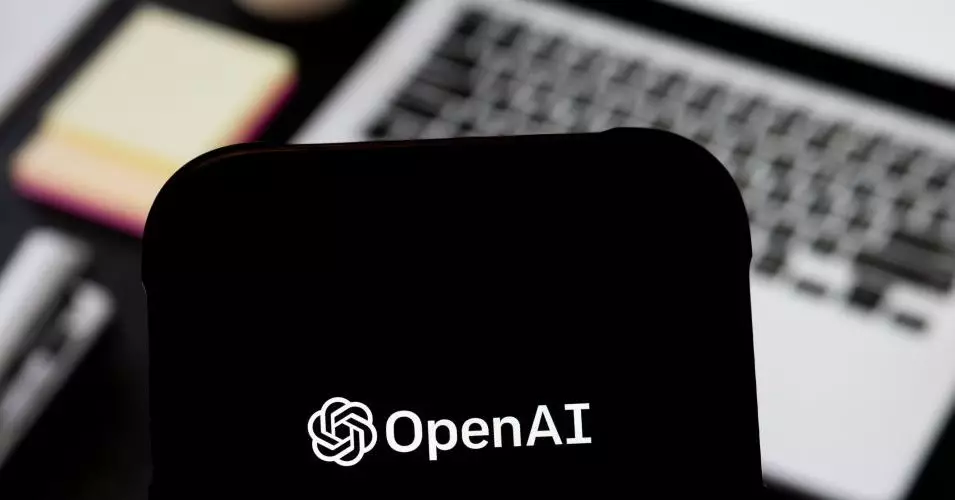In a significant announcement that has set the tech world abuzz, Sam Altman, CEO of OpenAI, declared that his company will soon release a powerful open-weight language model. As technology rapidly evolves, OpenAI’s decision seems to respond proactively to market demands, particularly in light of the staggering success achieved by competitors like DeepSeek. With the impending launch, OpenAI aims to reaffirm its position within the competitive landscape of artificial intelligence and to highlight the profound advantages of open-weight models.
Open-weight AI models are more than just a passing trend; they represent a key shift in the ethos surrounding artificial intelligence development. Unlike proprietary models that are kept under lock and key, open-weight models allow researchers and developers to access and modify the underlying architecture. This not only fosters innovation but also democratizes access to cutting-edge technology. OpenAI’s forthcoming model promises enhanced reasoning capabilities, and its availability will empower developers and researchers to implement AI systems tailored to their specific needs, particularly in sensitive applications.
Responding to Competitive Pressures
Altman’s candid acknowledgment of OpenAI’s previous stance on open models reflects the necessity of adapting in the ever-evolving tech landscape. His earlier declaration that the company was “on the wrong side of history” emphasized a pivotal moment of introspection. As competitors like DeepSeek and Meta gained momentum with their open models—DeepSeek’s R1, introduced earlier this year, has particularly been a game changer—OpenAI recognized an opportunity to shift gears and embrace transparency and collaboration.
Financial considerations are likely at the forefront of OpenAI’s strategic pivot. DeepSeek purportedly managed to train its model at a fraction of the typical costs associated with large AI models. In a bid not only to compete but to lead, OpenAI must showcase its ability to train and deploy models affordably. The potential implications for widespread use of AI—especially for small businesses and startups that historically wouldn’t have had the means to employ such sophisticated technology—are substantial.
The Community Response and Futuristic Outlook
The reaction from the AI community has been overwhelmingly positive. Clement Delangue, co-founder of HuggingFace, hailed this move as “amazing news,” emphasizing the significance of open weights in unlocking the potential of AI. OpenAI’s decision represents a collective realization across the community of the importance of accessibility. A culture that supports open-source ideals can lead to accelerated advancements and diversified applications, particularly in the realms of healthcare, education, and beyond.
As seen with the burgeoning interest in models like Meta’s Llama, the advantages of open-weight frameworks go beyond mere cost-effectiveness. They allow for the manipulation of model weights which can lead to tailor-made solutions in specific fields—an invaluable feature for industries that deal with sensitive information. The fundamental shift towards openness could also spur collaboration among researchers to develop AI systems that utilize shared learning and expertise.
The Challenges of Open Weights
Despite the numerous advantages, the introduction of open-weight models does not come without its complications. The concerns surrounding the potential misuse of AI technology raise considerable ethical questions. Notably, there is apprehension that these open models could be exploited for malicious purposes, such as orchestrating cyberattacks or developing harmful biological agents. OpenAI researchers have emphasized a cautious approach, assuring rigorous testing protocols to mitigate these risks.
Such ethical dilemmas demand that entities like OpenAI remain vigilant. Researchers have highlighted that while innovations like the new open-weight model represent a remarkable advancement, they must be handled with humility and responsibility. Johannes Heidecke, an AI safety researcher at OpenAI, reassured the community that the company would not release models that pose a “catastrophic risk.” This represents a balancing act between encouraging innovation and ensuring public safety.
Looking Ahead: A Future of Collaboration and Responsibility
The impending release of OpenAI’s open-weight model heralds not just a technological breakthrough but a commitment to collaboration, accessibility, and ethical responsibility. With OpenAI willing to engage with the developer community through events and early access initiatives, a new chapter in the AI narrative is set to unfold where users and developers can actively shape the technology rather than being passive consumers.
Such an inclusive approach could pave the way to tackling some of the most pressing challenges facing humanity today. The dialogue surrounding open models will likely evolve, and as the AI landscape continues to expand, the collaborative spirit that OpenAI is nurturing will be pivotal in steering its future directions.

